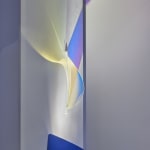Open a larger version of the following image in a popup:
 Photographed by Norbert Tukaj
Photographed by Norbert Tukaj
 Photographed by Norbert Tukaj
Photographed by Norbert Tukaj
Open a larger version of the following image in a popup:
 Photographed by Norbert Tukaj
Photographed by Norbert Tukaj
 Photographed by Norbert Tukaj
Photographed by Norbert Tukaj
Open a larger version of the following image in a popup:
 Photographed by Norbert Tukaj
Photographed by Norbert Tukaj
 Photographed by Norbert Tukaj
Photographed by Norbert Tukaj
Open a larger version of the following image in a popup:
 Photographed by Norbert Tukaj
Photographed by Norbert Tukaj
 Photographed by Norbert Tukaj
Photographed by Norbert Tukaj
Open a larger version of the following image in a popup:
 Photographed by Norbert Tukaj
Photographed by Norbert Tukaj
 Photographed by Norbert Tukaj
Photographed by Norbert Tukaj
Open a larger version of the following image in a popup:
 Photographed by Norbert Tukaj
Photographed by Norbert Tukaj
 Photographed by Norbert Tukaj
Photographed by Norbert Tukaj
Open a larger version of the following image in a popup:
 Photographed by Ieva Baranauskaitė
Photographed by Ieva Baranauskaitė
 Photographed by Ieva Baranauskaitė
Photographed by Ieva Baranauskaitė
Open a larger version of the following image in a popup:
 Photographed by Ieva Baranauskaitė
Photographed by Ieva Baranauskaitė
 Photographed by Ieva Baranauskaitė
Photographed by Ieva Baranauskaitė
Daydreamer from Ruta Palionyte on Vimeo.
Daydreaming Objects
Light object "Daydreamer", 2022
Dichroic glass, quartz sand, aluminium, light source
71 (H) x 30 (W) x 15,5 (D) cm
The sand elements are available in Earth White and Mars Blue colors.
The dichroic glass color effect is available in Orange and Cyane.
Different colors are available on request.
Daydreamer is available on request, delivery time: 8-10 weeks.
The sand elements are available in Earth White and Mars Blue colors.
The dichroic glass color effect is available in Orange and Cyane.
Different colors are available on request.
Daydreamer is available on request, delivery time: 8-10 weeks.
Further images
-
(View a larger image of thumbnail 1
)

-
(View a larger image of thumbnail 2
)

-
(View a larger image of thumbnail 3
)

-
(View a larger image of thumbnail 4
)

-
(View a larger image of thumbnail 5
)

-
(View a larger image of thumbnail 6
)

-
(View a larger image of thumbnail 7
)

-
(View a larger image of thumbnail 8
)

The Daydreamer - an object that responds to natural and artificial light Daydreamer is a hybrid object of art and design, creating ways to observe the phenomena of light. The...
The Daydreamer - an object that responds to natural and artificial light
Daydreamer is a hybrid object of art and design, creating ways to observe the phenomena of light. The luminaire consists of two individual parts – the curved dichroic glass piece and the quartz sand element with an integrated miniature spotlight. A seemingly transparent curved glass tints the surrounding surfaces with colours and becomes a brush to create paintings of light. Dichroic glass has special optical properties: it reflects some of the component colours of light and is permeable to others. It reveals a fact that we all know but can not see: white light contains many colours. The object brings an opportunity to observe the continues shifting: during the day – with changing natural light, and in the evening – with the help of artificial illumination. It is the light that forms the dialogue between the elements of sand and glass, shaping it into wall mounted luminaire- the Daydreamer.
TIME
The object Daydreamer consists of two biomorphic elements made of dichroic glass and quartz sand, closely related materials that represent time. Quartz sand formed over 50 million years ago due to changing weather conditions and erosion of rocks. It is the basis for the manufacture of glass, with its purpose having been gradually gaining relevance since Roman times and given even more potential in the new age of technology. Modern dichroic glass is the result of NASA’s research in different materials and is now used in the aerospace industry as well as other fields.
DICHROIC GLASS
The original meaning of dichroic comes from the Greek ‘dikhroos’ and refers to an optical phenomenon, which means ‘two colors’ in Greek. Dichroic optical device can split a beam of light into two beams with differing wavelengths. All light, whether visible or invisible, is a kind of wave, but most of light is invisible to our eyes. Daydreamer reveals the invisible, illustrating what we know, but can’t see - white light consists of a collection of component colors. With the help of nanotechnology our curved glass element is treated with an extremely thin dichroic optical coating. Depending on the angle of the light rays and the viewer’s perspective, dichroic glass may appear simultaneously colourless and intensely colourful, translucent and reflective.
SAND
Daydreamer‘s sculptural sand element was inspired by the formation of the dunes, known as barchans - the distinctive cresent-shaped dunes with horns. Most sand on Earth is made from the mineral quartz, which is white and bright. Barchan dunes occurs in sandy deserts all over the world. They were also observed on Mars, where the thin atmosphere produces winds strong enough to move sand and dust. On Mars, most sand is composed of dark basalt, a volcanic rock. For this reason, dunes on Mars are darker than those on Earth. In areas with cooler temperatures, they appear in tints of blue.
Daydreaming Objects is represented by a Copenhagen-based Lithuanian creative duo: lighting designer Ruta Palionyte and architect Ieva Baranauskaite. Combining diverse skills, the duo creates objects that go beyond mere function, telling stories and infusing everyday spaces with dreaminess. They approach a blend of unexpected materials, curiosity-driven research, and bold experimentation, pushing the boundaries of creativity in the design process. In 2024, the creative studio Daydreaming Objects is launching their new lighting series, Soft Solids. The Soft Solids explore the intentional use and repurposing of natural material—wax, reflecting on its potential for regeneration within design practice.
Rūta Palionytė (b. 1983, Lithuania) is a Copenhagen-based light installation artist and lighting designer with a Master’s degree from the Edinburgh (Scotland). For her, the phenomenon of light and its influence on visual perception, architecture, design objects or natural landscape is one of the main creative sources. Palionytė also collaborates with artists in various fields and has implemented many international projects.
Ieva Baranauskaitė (b. 1989, Lithuania) is an architect with a Master’s degree from the Royal Danish Academy of Arts, Copenhagen, and a BA obtained at Vilnius Gediminas Technical University. She has gained her professional experience working in renowned architectural offices in Japan (Kengo Kuma and Associates), Denmark (KHR Architecture) and Lithuania (Arches). Currently Baranauskaitė is developing her individual practice and working on various architecture and design projects in Lithuania and Scandinavian countries.
Daydreamer is a hybrid object of art and design, creating ways to observe the phenomena of light. The luminaire consists of two individual parts – the curved dichroic glass piece and the quartz sand element with an integrated miniature spotlight. A seemingly transparent curved glass tints the surrounding surfaces with colours and becomes a brush to create paintings of light. Dichroic glass has special optical properties: it reflects some of the component colours of light and is permeable to others. It reveals a fact that we all know but can not see: white light contains many colours. The object brings an opportunity to observe the continues shifting: during the day – with changing natural light, and in the evening – with the help of artificial illumination. It is the light that forms the dialogue between the elements of sand and glass, shaping it into wall mounted luminaire- the Daydreamer.
TIME
The object Daydreamer consists of two biomorphic elements made of dichroic glass and quartz sand, closely related materials that represent time. Quartz sand formed over 50 million years ago due to changing weather conditions and erosion of rocks. It is the basis for the manufacture of glass, with its purpose having been gradually gaining relevance since Roman times and given even more potential in the new age of technology. Modern dichroic glass is the result of NASA’s research in different materials and is now used in the aerospace industry as well as other fields.
DICHROIC GLASS
The original meaning of dichroic comes from the Greek ‘dikhroos’ and refers to an optical phenomenon, which means ‘two colors’ in Greek. Dichroic optical device can split a beam of light into two beams with differing wavelengths. All light, whether visible or invisible, is a kind of wave, but most of light is invisible to our eyes. Daydreamer reveals the invisible, illustrating what we know, but can’t see - white light consists of a collection of component colors. With the help of nanotechnology our curved glass element is treated with an extremely thin dichroic optical coating. Depending on the angle of the light rays and the viewer’s perspective, dichroic glass may appear simultaneously colourless and intensely colourful, translucent and reflective.
SAND
Daydreamer‘s sculptural sand element was inspired by the formation of the dunes, known as barchans - the distinctive cresent-shaped dunes with horns. Most sand on Earth is made from the mineral quartz, which is white and bright. Barchan dunes occurs in sandy deserts all over the world. They were also observed on Mars, where the thin atmosphere produces winds strong enough to move sand and dust. On Mars, most sand is composed of dark basalt, a volcanic rock. For this reason, dunes on Mars are darker than those on Earth. In areas with cooler temperatures, they appear in tints of blue.
Daydreaming Objects is represented by a Copenhagen-based Lithuanian creative duo: lighting designer Ruta Palionyte and architect Ieva Baranauskaite. Combining diverse skills, the duo creates objects that go beyond mere function, telling stories and infusing everyday spaces with dreaminess. They approach a blend of unexpected materials, curiosity-driven research, and bold experimentation, pushing the boundaries of creativity in the design process. In 2024, the creative studio Daydreaming Objects is launching their new lighting series, Soft Solids. The Soft Solids explore the intentional use and repurposing of natural material—wax, reflecting on its potential for regeneration within design practice.
Rūta Palionytė (b. 1983, Lithuania) is a Copenhagen-based light installation artist and lighting designer with a Master’s degree from the Edinburgh (Scotland). For her, the phenomenon of light and its influence on visual perception, architecture, design objects or natural landscape is one of the main creative sources. Palionytė also collaborates with artists in various fields and has implemented many international projects.
Ieva Baranauskaitė (b. 1989, Lithuania) is an architect with a Master’s degree from the Royal Danish Academy of Arts, Copenhagen, and a BA obtained at Vilnius Gediminas Technical University. She has gained her professional experience working in renowned architectural offices in Japan (Kengo Kuma and Associates), Denmark (KHR Architecture) and Lithuania (Arches). Currently Baranauskaitė is developing her individual practice and working on various architecture and design projects in Lithuania and Scandinavian countries.
10
of
10
